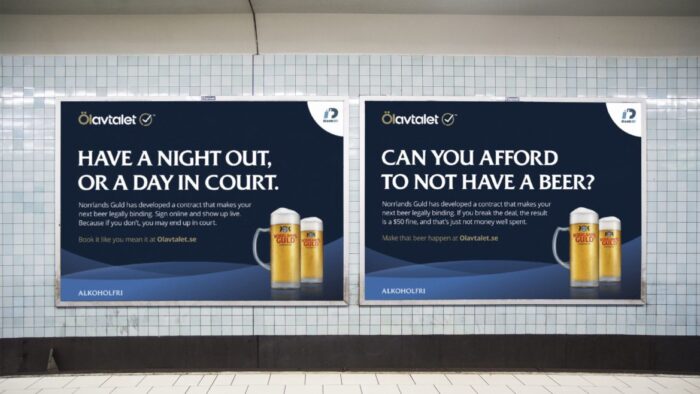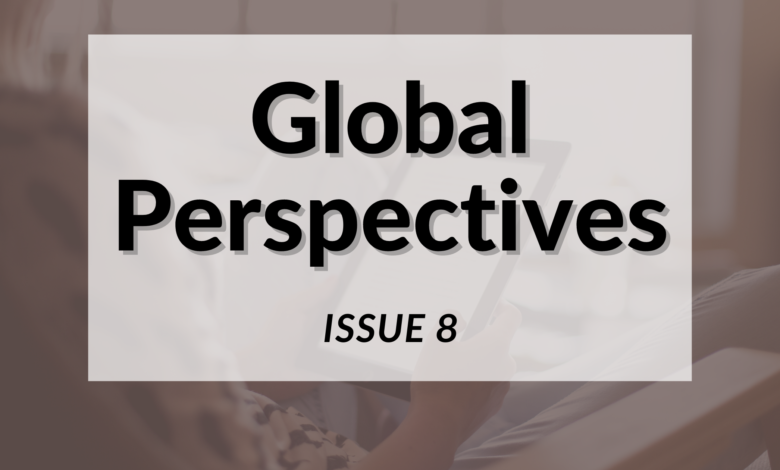Our latest round-up examines an inspired marketing campaign from a Swedish beer brand, offers tips on how to safeguard your focus and creativity, and reveals how a wardrobe study will make you rethink your product marketing.
Every week we bring you highlights from the world of marketing. Global, thought-provoking and overflowing with insight, we find the stories you might have missed – all delivered with our take on what it means to you.
Don’t miss out! Subscribe to our global marketing newsletter.
International campaign highlight – Norrlands Guld
This week’s international campaign highlight comes from Sweden and leading beer brand Norrlands Guld. The company had a problem – even though it was a category leader, growth was stagnating.
They needed to come up with an inspired marketing campaign and with the help of creative agency Akestam Holst, they did just that.
Here’s what they understood: people are flaky when it comes to arrangements, especially now that digital distractions can make it easy to be diverted. The brand already had a positioning around bringing people together (epitomised by their tagline ‘Be together for a moment’). So how do you connect the two?
The Legally Binding Beer Contract

They came up with the idea of a legally binding contract in collaboration with local law firm Synch Law. Contracts could be created online in a few minutes on a specially built mobile website.
Users wanting to use the service simply had to enter a date, time and place, and sign it using the existing and widely adopted Mobile BankID. Geolocation was also used to recommend a nearby Norrlands Guld pub. Each contract drafted using Mobile BankID generated a digital ‘receipt’ that was sent to their friends(s), which also doubled as the invitation to meet up.
Charlotte Liljewall from Norrlands Guld said:
“Trying to plan a simple get together with a friend can be tricky. Just because you agree to grab a beer doesn’t necessarily mean it will happen. To put an end to this half-hearted behaviour, and get more Swedes to meet as agreed, we’ve created a digital tool that helps turn empty words into action with a contract that guarantees a beer will take place. We want the contract to transform ‘maybe we’ll grab a beer’ into a legally binding ‘yes’.”
Making existing technology work for you
Rather than reinvent the wheel the campaign used Mobile BankID, Sweden’s electronic citizen identification solution, which enables users to pay bills and sign legal contracts remotely. With over 80% of the Swedish population already using the App there were no barriers to the campaign’s adoption. Using the app’s contract signing capabilities, Norrlands Guld were able to make meet-up plans legally binding!
Key takeaways for marketers
- The behavioural insight was key, but being able to connect that to the brand’s existing positioning was critical. Don’t try and put a square in a round hole just because the idea is clever.
- Existing technology was repurposed removing both adoption barriers and costs.
- The physical delivery was easy to amplify due to the sharable (fun) nature of the creative which in turn acted as a multiplier on audience reach.
Find out more about this Swedish marketing campaign here.
Have a great case study? Then get in touch as we’d love to hear about it.
2. Big Tech Regulation
 As regular readers will know, we regularly comment on this unfolding situation. After all, the outcome could have a profound effect on marketers. The latest twist comes not from the USA but from Australia.
As regular readers will know, we regularly comment on this unfolding situation. After all, the outcome could have a profound effect on marketers. The latest twist comes not from the USA but from Australia.
I’m sure that most of you will know the story. The Australian Government wants Google to pay publishers for the news that Google republishes (which then drives revenue for Google but not for the publisher). In response Google has threatened to remove the news from its listings (in fact it already has removed 1% as a test).
The idea is that this new revenue will support local publishers whose ad revenues, already under pressure pre-Covid, are in freefall. By supporting quality over quantity and supporting independent journalism there is the additional benefit, in theory, of reversing the race to the bottom of high volume, low quality, clickbait content. Noble goals indeed.
As regular readers will know I am often critical of Big Tech but care must be taken to not throw the baby out with the bath water. Lots of publishers also get significant revenues via google, especially those that diversified into commerce, experiences, and other income streams.
Publishing groups that were once pro Google are now realising that their revenue model – advertising wrapped around content – is disappearing and have left it too late to diversify (think News Corp).
The reality is that we do have a problem that needs fixing. But the current brinkmanship from both sides will not help. All it will do is create more problems or move it around. What is needed is a constructive conversation about the value of content, quality journalism and accuracy.
Key takeaways for marketers
- News being banned would reduce traffic on both sides of the wall. That means less eyeballs, reduced conversion, price inflation.
- Some of this would transfer to other digital properties including No2 and No3 in search market (Still only 1% currently) which may make people feel better but doesn’t solve the underlying structural issue.
- The direction of traffic is clear. This means brands should also be looking at how to evolve their model, make their content economically viable and respond to the death of 3rd party cookies – and other regulatory or technological shifts.
3. How to boost your creativity during Covid
 I’ve been reading a lot about how the long term effects of lockdown and/or restricted office hours in many countries is affecting creativity. Certainly we can all relate to screen burn and zoom zone-out.
I’ve been reading a lot about how the long term effects of lockdown and/or restricted office hours in many countries is affecting creativity. Certainly we can all relate to screen burn and zoom zone-out.
Key takeaways for marketers
I’ve read dozens of articles and research papers on this issue. What I’ve learned can be summarised in a few points, saving you time (if you believe me!):
- Attending a zoom meeting is not the same as being present. Make sure everyone on a Zoom call is engaged and participating. Use interactive tools, use breakout rooms and ask questions.
- This seems obvious but only set and attend online meetings that are absolutely necessary. People are attending so they can be seen. But that doesn’t mean they are really engaging. Instead, they are merely being distracted from the other work they are trying to do. It’s a lose-lose situation which you really ought to avoid.
- Do smaller meetings. Big meetings destroy creativity. They are great for updates, but hey so is an email. Who NEEDS to be there. Set rules, set agendas, set outcomes.
- Shorten ALL your zoom meetings by 10 minutes. I guarantee you will almost always get the same amount done but now you have hours of your week back for thinking or creating.
- Block out non-Zoom time. Really, like half your day.
- Switch off all devices completely, especially your phone. Walk, run, sit in the garden with a coffee and contemplate the challenge you are trying to solve.
- Finally working alone means our normal filters and feedback mechanisms are out of kilter so don’t be afraid to come up with shit ideas. They are part of the process and way better than no ideas. They often start as the incubator to great ideas.
I won’t list all the articles but if you read one, this one from Martin Lindstrom is my favourite.
Get the next issue delivered to your inbox: subscribe to our global marketing newsletter!
4. Data lessons from your wardrobe
 OK so this is a super geeky bit of data analysis that may seem irrelevant at first. Bare with it, the pay off is at the end.
OK so this is a super geeky bit of data analysis that may seem irrelevant at first. Bare with it, the pay off is at the end.
Olof Hoverfält a design consultant at service/product design company Reaktor, tracked his clothes usage for years. What he wore, how many times and for how long.
It’s detailed but for a data geek like me is fascinating. The article shows why usually it’s better to spend more money on things you love, that you use often and that lasts longer than to plump for low cost, disposable clothing. Why should I care? – Well the payoff for marketers is at the end but largely summarised in my two points above.
Key takeaways for marketers
- As consumers we should invest in things we love, that last, that we use frequently.
- As marketers we need to look at how often and how long our products are used and encourage higher usage/engagement even post-purchase to reduce churn.
- Both of the above are important considerations for business sustainability, one of the key trends for the next decade that companies and marketers will need to embrace.
Contributors needed – become a thought leader on the GMA
We’re looking for new contributors to the GMA. If you’re a practicing marketer or work in a related field and want to share your thought leadership and insight then please get in touch. We’re particularly interested in non-UK contributors who can tackle issues related to their country or region (that’s not to exclude UK practitioners, but we’re trying to get a fair balance).
Email: editor@the-gma.com and include ‘global marketer’ in the subject line.









Leave your thoughts